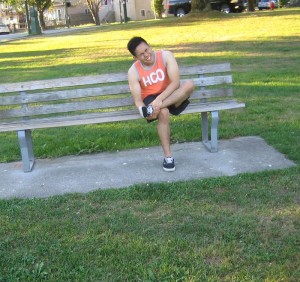Spider veins typically develop on the thighs and the leg. They can also manifest in the feet, ankles or in other body parts. Spider veins are characterized as fine, dark-looking veins that form in clusters like a web or a spider on the skin surface. Spider veins should be treated before progressing into varicose veins. Spider veins are likely to affect women during the childbearing years.
Spider veins happen when the wall of the veins becomes weak and blood builds up inside or there is increased pressure on the ankles. Spider veins can develop at any age but it is most common between 50-60 years of age.
Causes of spider veins
- Long periods of standing
- Obesity
- A history of blood clots or circulatory problems
- Family predisposition
- Hormonal conditions during puberty, pregnancy and menopause
- Taking contraceptive pills
Spider veins happen when the wall of the veins becomes weak and blood builds up inside or there is increased pressure on the ankles.
Treatment
- Wear compression stockings which are support hoses that compress the dilated spider veins. The hoses squeeze the ankles and make the blood move back to the legs and to the heart. Compression hoses increases circulation of blood and lessen the pressure on the veins and minimizes the swelling of the foot.
- When sitting or relaxing, elevate the legs above the level of the heart at least 3-4 times every day for about 15 minutes at a time to lessen the pressure on the legs. Another alternative is to sit on the couch in a sideway position and elevate the legs on a couple of pillows or cushions.
- Avoid wearing tight-fitting clothing that causes constriction of the ankle area, avoid crossing the legs at the ankle when sitting and avoid standing or sitting in one position for long periods of time. Standing causes an increase in the pressure on the valves and makes them swell and lead to the formation of spider veins.
- Perform regular exercises such as climbing the stairs instead of using an elevator, walking during lunch break or taking a swim for a few laps every morning to lessen pressure on the veins and increases the circulation of blood in the area. During long rides, stop every few hours and take a brisk walk.
- Try to cut down some weight to prevent placing extra pressure on the legs which increases the risk of developing spider veins in the ankle.
- Massage the affected area using a lotion. Rub the legs using a lotion containing St. John’s wort oil or use a massage oil to relax the legs and improve blood circulation in the area. Massage the oil in the legs and ankles and rub the area in a circular movement and squeeze the feet and ankle once in a while to eliminate blood from the spider veins. This process will lessen the blood in the ankles and feet and promotes proper flow of blood in the area.

